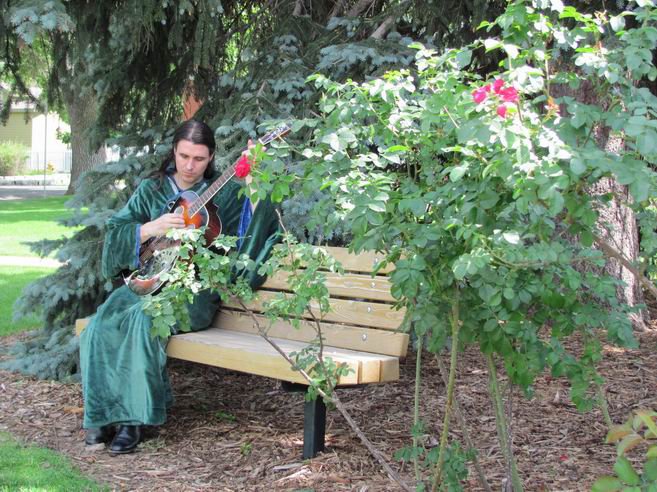So my group is playing Warhammer Fantasy (2e?) and I am creating an Estalian Diestro ( think Inigo Montoya). I was looking at the foil or rapier weapon and it sparked me thinking: what was the most deadly fencing weapon historically? The epee, small sword, saber, estoc, rapier, or something else? Most search results focus on fencing as a sport not actual combat. The situation would be single duel/ small group combat not actual war. I would love to hear some opinions!
From watching Skallagrim and Scholagladiatoria on YouTube, it’s a pretty loaded question. As shields and armor evolved, so did the weaponry to counter them. Also, if you were primarily in horseback, you would have different weapons than a foot soldier. A large two handed sword would work for someone on foot with armor, because it wouldn’t be too big to use while mounted and you don’t need the other hand for reigns or a shield. So basically through history it’s balancing what gear you have vs your enemy.
A Roman gladius has probably killed more people than most swords. It was used for a long time and looks pretty simple to produce compared to later swords. It was also used by well trained troops, not armies of random people. Not really Inigo Montoya style though.
Most of the pics I see of Estalian Diestro are using cup hilted rapiers, and falchions in some cases. A falchion (13-16 century )would come a bit before the rapier (15-17 century) if you have an early or later time period you’re looking to emulate. If you want Inigo, that’s the rapier.
I agree with the other poster, but I think there’s a reason that sabers survived in military use up until the early modern era, while most other swords died out. The saber is simply quite a versatile design, with a cutting edge and enough weight to make use of it and to parry heavier weapons without breaking, a point for thrusting, a hand guard so you don’t lose fingers, but not a bug clunky one like some of those cup hilt swashbuckler era things.
The saber was also good for use on horseback and on foot, on the battle field and in a duel. At least as far as European (and American) swords go, it saw the most universal use because it was so versatile and good at it’s job.
There are certainly East Asian, Indian, African and Middle Eastern swords that saw use up through the modern era (the Japanese were still using katanas in WWII), but as far as European fencing / swashbuckling styles of arms went, the saber was the most popular and persisted the longest in real use for some fairly solid reasons.
I think sabers stuck around the longest because they were used by cavalry(-adjacent) units. That’s because the curved edge makes it easy to slash a lightly armored enemy while you’re riding past. Cavalry was used up to WW2 in some armies, when infantry had long replaced melee weapons with gunpowder weapons.
For dueling against an unarmored opponent, I think rapier-like swords would be best because they have range and speed. Against armor, you need a heavier weapon, like a medieval longsword.
Edit: personally, when doing medieval re-enactment battles, I prefer spears over swords because it’s hard to beat an extra meter in length. The heavier weight isn’t much of an issue if you’re used to it.
Historically, many people used staffs and spears for self defence because they’re more readily available than swords, easier to use and more effective outside of rather specific circumstances.
I deleted my tangent on spears a few times! Everybody in history has used the spear and in massive numbers. Cheap, easily made and repaired, and lower initial training required. If we count bayonets as spears, they’re still used today.
I’m no expert, but I’d guess that you’re running into a lot of sport-related results because I assume fencing is the name of the sport and not just the one-handed fighting style. I also think that’s going to become a hard line to draw, since there’s no referee on a battlefield to blow the whistle when someone suddenly uses their free hand to add a little force to a blow.
So it depends. Where’s the single combat occurring? On a ship? Axes are great for boarding action as well as chopping rope. Inside a castle or on city streets? A short blade will be better than a long one. In an open field? Why bother with one weapon held in a single hand? Oh, because it’s a duel at sunrise? Well, now we’re basically back to fencing; combat with defined parameters.
For one-on-one dueling, using a weapon you can wear as a sidearm, the rapier has the advantage; that’s what it’s optimized for. If small group combat is a possibility, other swords might be useful: an estoc if you might encounter armor, or a curved sword if you need to move quickly between multiple opponents.
I would rule out the epee and small sword. They are basically rapiers that sacrifice effectiveness in order to be less cumbersome as fashion accessories.
I’d guess a longsword would be the weapon of choice in my opinion. It’s heavy enough to counter against sabers for example and quick enough to be usable against e.g. rapiers.
It was the fencing weapon of choice in medieval Europe from around the 12th to 17th century and is kinda similar to Asian fencing swords, which where also used for a long time.


